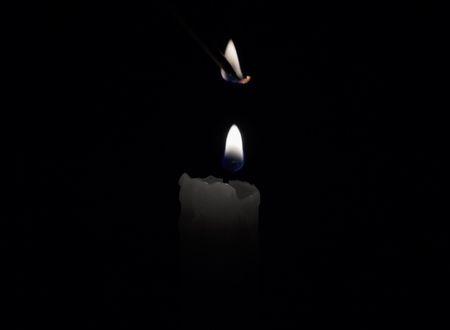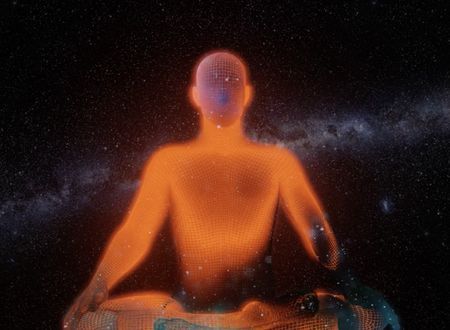Reaching Life’s Perfection (Part One)
If you ask around, very few people will be able to explain their relationship with God. They say, “What is God? God is dead. I don’t believe in God, what to speak of a relationship.” Because these dirty things are covering their hearts, they cannot see.
We have a relationship with everything – why do we not try to understand our relationship with God? Is that very intelligent? No. That is ignorance. All the creatures in this material world are covered by the three modes of material nature. Therefore they cannot see God. They cannot understand God, nor do they try to understand Him. But God is there.
In England in the morning there is mist, so you cannot see the sun behind the fog. But does this mean that there is no sun? You cannot see it because your eyes are covered. But if you send a message to another part of the world, they will say, “Yes, the sun is here. We can see it. It is very dazzling, full of light.”
So when you deny the existence of God or you cannot ascertain your relationship with God, that means that you are lacking in knowledge. It is not that there is no God. We are lacking. The sun is not covered. The sun cannot be covered. The fog or the cloud or the mist does not have the power to cover the sun. How big the sun is! It is so many times bigger than this earth. And the clouds can cover at most ten or twenty or a hundred miles. So how can the clouds cover the sun? No. The clouds cannot cover the sun. They cover your eyes. When an enemy comes and a rabbit cannot defend himself, the rabbit closes his eyes and thinks, “My enemy is now gone.” Similarly, we are covered by the external energy of God and are thinking, “God is dead.”
The Lord has three kinds of energies. In the Viṣṇu Purāṇa, there are descriptions of the energy of the Supreme Lord. And in the Vedas also, in the Upaniṣads, there are descriptions of the energies of the Supreme Lord. Parāsya śaktir vividhaiva śrūyate [Śvetāśvatara Upaniṣad 6.8]. Śakti means “energy.” The Lord has multi energies.
The Vedas say, “God has nothing to do.” We have to work because we have no other means to exist – we have to eat, we wish to enjoy this, that – but why should God work? God does not have to work. Then how can we say that God created this universe? Is that not work? No. Then how did it happen? His multifarious energies are so strong that they are acting naturally and are full of knowledge.
We can see how a flower blooms and grows and systematically displays multicolours: one side a little spot, another side a little spot, white on one side, more white on the other side. The butterfly also exhibits such artistic symmetry. So this is all being painted, but in such a perfect way and so swiftly that we cannot see how. We cannot understand how it is being done, but it is being done by the energy of the Lord.
It is due to a lack of knowledge that people say that God is dead, that there is no God, and that we have no relationship with God. These thoughts have been compared to the thoughts of a man haunted by a ghost. Just as a haunted man speaks all nonsense, when we become covered by the illusory energy of God, we say that God is dead. But this is not a fact.
Therefore, we need this chanting process to cleanse our hearts. Take to this simple process of chanting the Hare Kṛṣṇa mantra. In that way, in your family life, in your club, in your home, on the road – everywhere – chant Hare Kṛṣṇa, and this darkness covering your heart, covering your real position, will be removed. Then you’ll understand your real constitutional position.
Lord Caitanya Mahāprabhu recommended: ceto-darpaṇa-mārjanam. Mārjanam means “cleansing”; darpaṇam means “mirror.” The heart is a mirror. It is like a camera. Just as a camera takes all kinds of pictures of days and nights, so also our heart takes pictures and keeps them in an unconscious state. Psychologists know this. The heart takes so many pictures, and therefore it becomes covered. We do not know when it has begun, but it is a fact that because there is material contact, our real identity is covered. Therefore ceto-darpaṇa-mārjanam: one has to cleanse his heart.
There are different processes to cleanse the heart – the jñāna process, the yoga process, the meditation process, pious activities. Karma also cleanses the heart. If one acts very piously, his heart will gradually be cleansed. But although these processes are recommended for cleansing the heart, in this age they are all difficult. To follow the path of philosophical knowledge one must become a very learned scholar, one must read so many books, one must go to learned professors and scholars and speculate. One must search out a person who has seen the light. So these are all philosophical processes.
Meditation is also a recommended process. One should question, “What am I?” Just consider: Am I this body? No. Am I this finger? No, this is my finger. If you contemplate your leg, you will see, “Oh, this is my leg.” Similarly, you will find everything to be “mine”. And where is that “I”? Everything is mine, but where is that “I”? When one is searching for that “I”, that is meditation.
Real meditation means concentrating all the senses in that way. But that meditation process is very difficult. One must control the senses. The senses are dragging one outwards, and one has to bring them inwards for introspection.
Therefore there are eight processes in the yoga system. The first is controlling the senses by regulative principles. Then sitting postures – that will help to concentrate the mind. If one sits leaning over, that will not help; if one sits up straight, that will help. Then controlling the breathing, then meditation, then samādhi. But today these are very, very difficult processes. No one can immediately perform them. The so-called yoga processes are fragmental – only the sitting postures and a few breathing exercises are practised. But that cannot bring one to the perfectional stage. The actual yoga process, although a recommended Vedic process, is very difficult to follow in this age.
Similarly one can try to get knowledge by the speculative philosophical process: “This is Brahman, this is not Brahman, so what is Brahman? What is spirit soul?” Such empiric philosophical discussion is also recommended, but it is useless in this age.
Therefore Caitanya Mahāprabhu – not only Caitanya Mahāprabhu but also the Vedic literature – says:
harer nāma harer nāma
harer nāmaiva kevalam
kalau nāsty eva nāsty eva
nāsty eva gatir anyathā
Kalau means “in this age.” Nāsty eva, nāsty eva, nāsty eva – three times nāsty eva. Eva means “certainly,” and nāsti means “not.” “Certainly not, certainly not, certainly not.” What is that “certainly not”? One cannot realise oneself by karma. That is the first “certainly not”. One cannot realise oneself by jñāna. That is the second “certainly not”. One cannot realise oneself by yoga. Certainly not. Kalau. Kalau means “in this age.” Kalau nāsty eva nāsty eva nāsty eva gatir anyathā. In this age, one certainly cannot achieve success by any of these three methods.
Then what is the recommended process? Harer nāma harer nāma harer nāmaiva kevalam. Simply chant the Hare Kṛṣṇa mantra. Kevalam means “only.” Simply chant Hare Kṛṣṇa. It is the easiest and most sublime process. This is recommended, practical, and authorized. So take it. Accept it in any condition of life. Chant. There is no expenditure, there is no loss. We are not chanting a secret. No. It is open. And by chanting you will cleanse your heart.
To be Continued…









Comments & Discussion
10 COMMENTS
Please login to read members' comments and participate in the discussion.